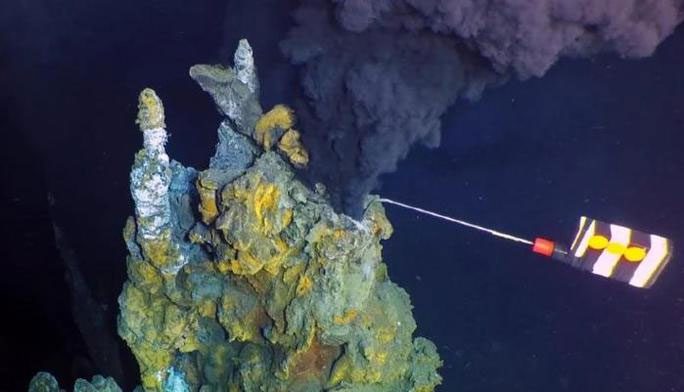Scientists have recently discovered an incredibly fascinating area in the deep and nutrient-rich waters of the Eastern Pacific Ocean, which holds significant importance across various fields.
“Monster Hydrothermal Field” is the term used by Science Alert to describe the astonishing revelations from research conducted by Lehigh University and the Woods Hole Oceanographic Institution (WHOI) in the United States.
In data collected by the AUV Sentry device from WHOI, an unimaginably vast hydrothermal field emerged in waters as deep as 2,560 meters, shrouded in darkness in the Eastern Pacific Ocean.

Autonomous robot studying the “monster hydrothermal field” – (Photo: WHOI)
This hydrothermal field is deemed “monstrous” because the hydrothermal systems here span a vast area with enormous chimneys reaching heights of up to three stories.
Initially, scientists believed the hydrothermal vents were “dead,” but upon closer examination of the activities, they found that not only were they still active, but they were also operating at unprecedented levels, hotter than any hydrothermal system studied in the region over the past 30 years. Nine sampled vents revealed temperatures reaching up to 368 degrees Celsius.
This discovery is incredibly intriguing, as the ecosystem surrounding the hydrothermal system is one of the richest and most peculiar populations on Earth.
Despite the frigid waters at depths unreachable by human divers, the hydrothermal system has provided a suitable environment for various species to thrive around it. Moreover, the hydrothermal system releases essential materials for life from deep within the Earth.
Research on early Earth suggests that hydrothermal systems on the ocean floor, particularly in the Pacific, could be the origin point for the first life forms.
Hydrothermal systems are also the focus of space agencies and planetary scientists searching for extraterrestrial life. Some celestial bodies, such as Saturn’s icy moon Enceladus, are believed to possess subsurface oceans beneath their icy crusts. Beneath these oceans are hydrothermal systems similar to those on Earth, where life may be sheltered.
Therefore, these “hydrothermal fields” right here on Earth serve as fascinating models for scientists to investigate, enabling them to design strategies for searching for life that may arise from similar models on other planets.
For a planet, hydrothermal systems act as the “lifeblood” of the ocean, providing a continuous transport system that helps regulate the temperature and chemical composition of the ocean.
However, since hydrothermal systems are always located at the ocean floor and can only be studied using remote-controlled devices, scientists still believe that humanity’s understanding of hydrothermal systems remains limited.
With the newly discovered hydrothermal field, scientists are working diligently to map the area. Preliminary data suggests that the size of the entire field is equivalent to a football field, with fault lines indicating that it is controlled by tectonic activity.
The preliminary research has just been published in the scientific journal PNAS.


















































